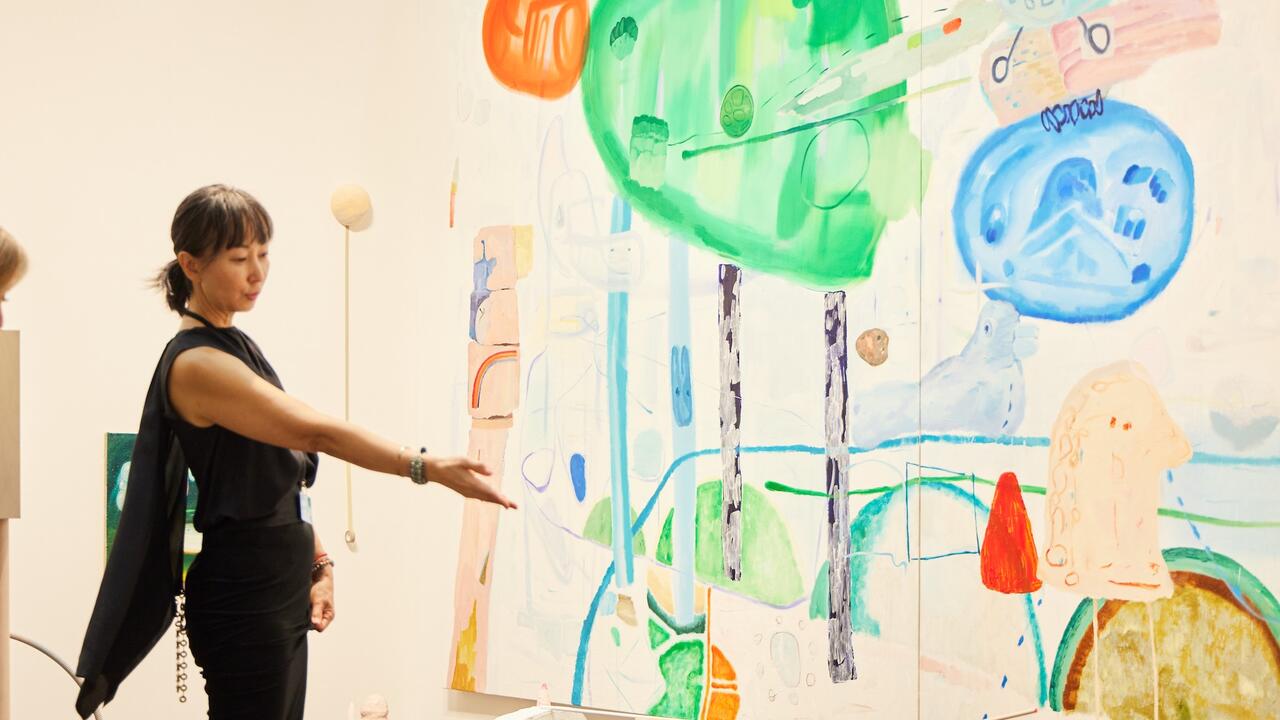The World as a Stage

In 1968, British theatre director Peter Brook stated: ‘I can take any empty space and call it a bare stage. A man walks across this empty space whilst someone else is watching him, and this is all that is needed for an act of theatre to be engaged.’ Brook’s assertion – so terse it could be taken for one of those wonderfully poker-faced Conceptual artist’s statements of the 1970s – is quoted by Catherine Wood in her engaging essay accompanying the ambitious, timely and yet problematic exhibition ‘The World as a Stage’, which she co-curated with Jessica Morgan at Tate Modern. There is a nice circularity to Wood’s invocation of Brook. The show’s title paraphrases Shakespeare’s famous ‘All the world’s a stage’ soliloquy from ‘As You Like It’ (c. 1599); Tate Modern’s next door neighbour is Shakespeare’s Globe (a reconstruction of the Elizabethan theatre which originally staged many of the Bard’s plays) and one of Brook’s best known works is his radical 1970 production of ‘A Midsummer Night’s Dream’ (c. 1600), to which he brought his interest in the ideas of Bertolt Brecht and Antonin Artaud; both of whom pushed the envelope of modern theatre in attempting to make transparent the mechanics of staging.
Featuring 16 international artists whose work explores the relationship between the visual arts and theatricality (in the expanded, Brookian sense), ‘The World as a Stage’ was auspicious. It chimed with the recent re-evaluation of performance art’s potential and the work of a generation of younger artists who have begun to engage with the legacy of experimental theatre practices. Yet in also stretching to demonstrate how gallery spaces have, in recent years, been used for performance or event-based work that relies on active participation from the audience, the show’s core thesis wobbled in and out of focus.
The strongest works were those situated outside the museum. Pawel Althamer’s Film (2000–7) began with a movie trailer involving Hollywood star Jude Law buying fish in London’s Borough Market. At the end of the beautifully produced teaser, viewers were invited to experience the ‘film’ at Borough Market, on 30 November at 11.30am. At time of writing, the film was yet to be ‘shown’, but the compelling idea was that anyone turning up at the appointed hour in the vicinity of the market might – or might not – spot one or two of the extras from the trailer or Law himself. Reminiscent of John Smith’s influential short The Girl Chewing Gum (1976) in which a static documentary shot of a town street is overdubbed with the voice of a narrator pretending to direct the action occurring on screen, Film toys with a range of ideas from sublime notions of pre-destination to more ridiculous fantasies that our lives are movies in which we’re the principal heroes. By using Law for what he represents in terms of celebrity yet letting his presence recede into the crowd, Film also provides a much-needed counterpoint to the current art-world fad for using A-listers in big-money art productions (stand up Francesco Vezzoli and Sam Taylor-Wood).
Although a familiar sight on the exhibition circuit, the inclusion of documentation from Jeremy Deller’s magnum opus The Battle of Orgreave (2001) – a re-staging of the clash between British police and picketing workers during the 1984–5 Miners’ Strike, and involving many who were part of the original confrontation – still powerfully demonstrates how performance can allow communities to confront the traumas of recent history. Tucked away amid displays from Tate’s collection was Andrea Fraser’s video projection of scrambled excerpts from the museum’s multimedia guides. What began as a potentially fascinating exploration of the way institutions ‘perform’ to their audiences (the sober, controlled female voice used on the adult guide contrasted with the enthusiastically perky male on the family version, for instance) soon became a cacophonous blast of noise and imagery that would perhaps have been more effective if encountered by surprise whilst walking around with the guides themselves.
Elsewhere, the show’s theme was explored to varying degrees of subtlety or literalness by Ulla von Brandenburg’s charmingly wonky tableaux vivants, Rita McBride’s Arena (1997) – a functioning set of seats raking upwards, amphitheatre-style – and Catherine Sullivan’s video The Chittendens: The Resuscitation of Uplifting (2005), in which actor’s movements are highly regimented and choreographed, resulting in an almost hysterically overloaded analysis of the way in which gestures carry codes. Trisha Donnelly's The Redwood and the Raven (2004) – a different photograph, changing each day, of dancer Francis Flannery performing in front of a tree – slowed the pace of the show; a spectral take on what constitutes a performance and its documentation. Jeppe Hein’s Rotating Labyrinth (2007), a mirrored structure resembling a giant zoetrope, allowed the viewer, when standing at a certain point inside, to see nothing but themselves reflected back ad infinitum. You could argue the piece was about object/subject relations, but Hein’s sculpture felt like a merely ingeniously disorienting amusement ride. Mario Ybarra Jr.’s Sweeney Tate (2007) – a heavy pun on the legendary ‘demon barber of Fleet Street’ – was a reconstruction of The New Chinatown Barbershop in Los Angeles, a gallery set up by Ybarra and his wife Karla B. Diaz, decked out with all the fittings of a traditional barbershop. The strikingly graphic installation hosted a one-day barber’s competition during the exhibition, yet felt neutered by its context, desperately craving the oxygen of the street.
Perhaps the most poignant statement in the show was Cezary Bodzianowski’s Flying Helmet (2007), in which the artist attempted to measure the entire exterior of Shakespeare’s Globe theatre, with the aim of comparing its dimensions to those of the Earth. As Brook said, ‘A man walks across this empty space whilst someone else is watching him …’.

















